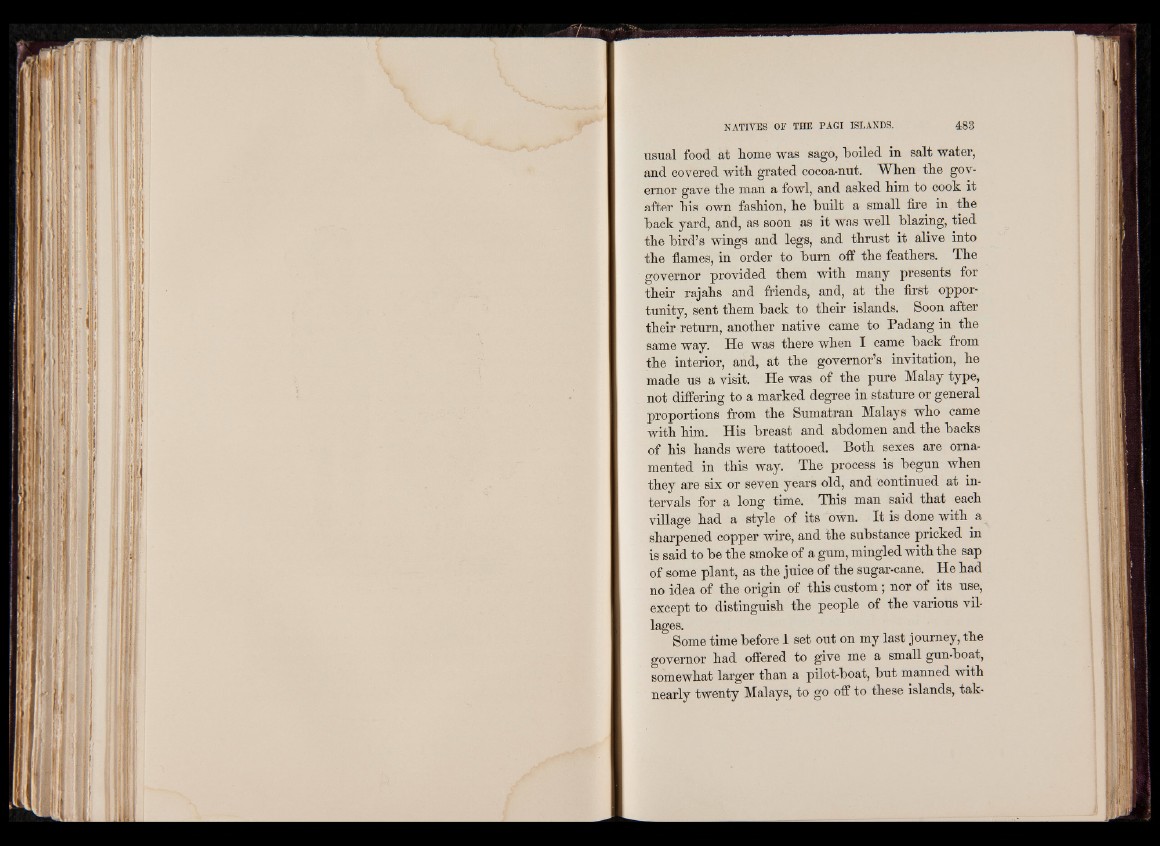
usual food at home was sago, boiled in salt water,
and covered with grated cocoa-nut. When the governor
gave the man a fowl, and asked him to cook it
after his own fashion, he built a small fire in the
back yard, and, as soon as it was well blazing, tied
the bird’s wings and legs, and thrust it alive into
the flames, in order to bum off the feathers. The
governor provided them with many presents for
their rajahs and friends, and, at the first opportunity,
sent them back to their islands. Soon after
their return, another native came to Padang in the
same way. He was there when I came back from
the interior, and, at the governor’s invitation, he
made us a visit. He was of the pure Malay type,
not differing to a marked degree in stature or general
proportions from the Sumatran Malays who came
with him. His breast and abdomen and the backs
of his hands were tattooed. Both sexes are ornamented
in this way. The process is begun when
they are six or seven years old, and continued at intervals
for a long time. This man said that each
village had a style of its own. It is done with a
sharpened copper wire, and the substance pricked in
is said to be the smoke of a gum, mingled with the sap
of some plant, as the juice of the sugar-cane. He had
no idea of the origin of this custom; nor of its use,
except to distinguish the people of the various villages.
Some time before I set out on my last journey, the
governor had offered to give me a small gun-boat,
somewhat larger than a pilot-boat, but manned with
nearly twenty Malays, to go off to these islands, tak